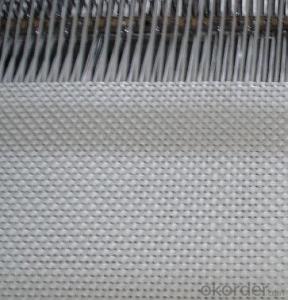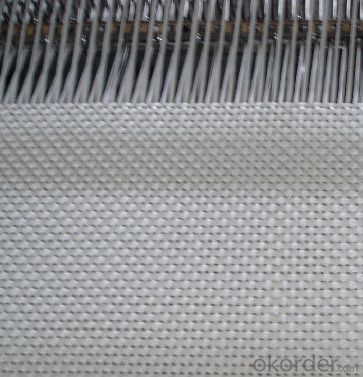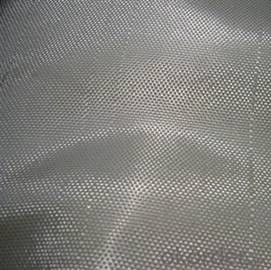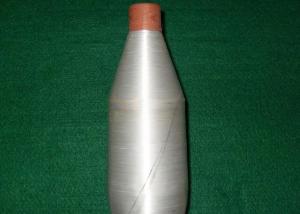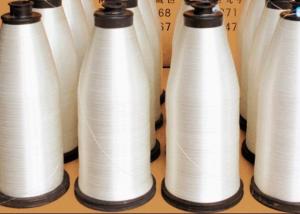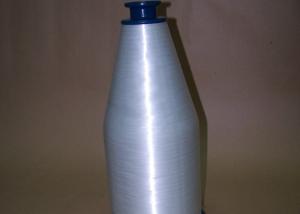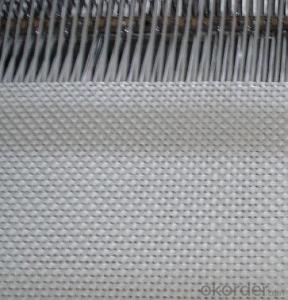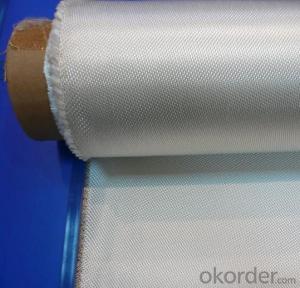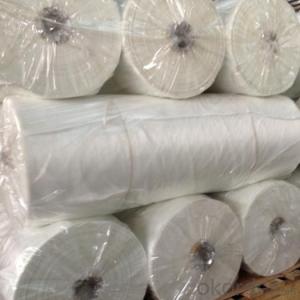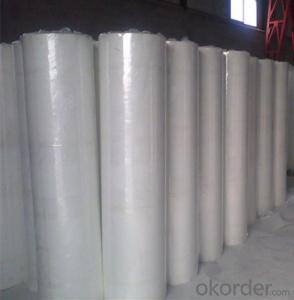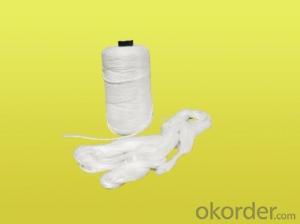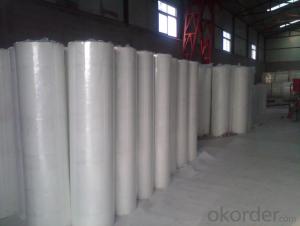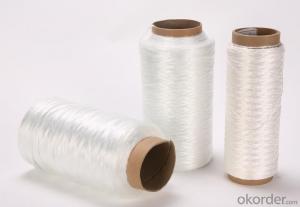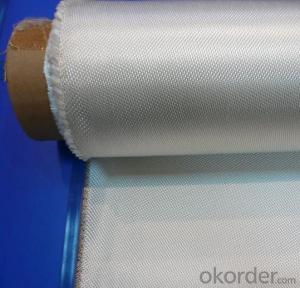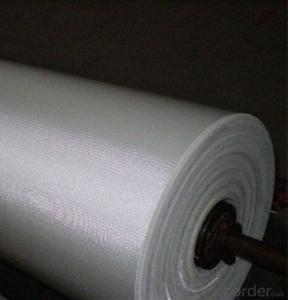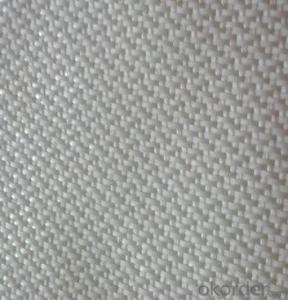Fiberglass Yarn - Flame-Resistant Fiberglass Fabric ISO9001
- Loading Port:
- Shanghai
- Payment Terms:
- TT OR LC
- Min Order Qty:
- 500 m²
- Supply Capability:
- 50000 m²/month
OKorder Service Pledge
OKorder Financial Service
You Might Also Like
Fiberglass Fabric of Excellent Flame-resisting ISO9001
Fiberglass Fabric Introduction:
Fiberglass fabric is weaved by high quality fiberglass,as a kind of engineering material,which is
many excellent characteristics:
flame-resisting,corrosion resistant,high strength,heat resistance.stable structure,good chemical resistance,durability.
Fiberglass Fabric Features:
Warp and weft yarns are parallel arrangement as flat situation, with uniform tension;
Fiber is aligned with large consistency, stable and easy operation;
Good moldability, fast and complete wet out in resins, resulting in high productivity;
Good transparency and high strength of composite products.
Fiberglass Fabric Specification:
mark | Fiber consistency(ends/ cm) |
Area weight (g/ m2) |
Thick-ness (mm) |
Width (cm) |
Length (mm) | Breaking strength(N)≥ |
weave | |||
Warp direction | Weft direction | Warp direction | Weft direction | |||||||
EW200 | 16 | 12 | 200±20 | 0.2 | 90-130 | 300-1200 | 980 | 980 | ||
EW210 | 16 | 12 | 200±20 | 0.21 | 90-130 | 300-1200 | 1080 | 1080 | Twill weave | |
Plain weave | ||||||||||
EWR360 | 3.2 | 1.8 | 354±18 | 0.35 | 50-300 | 100 | 2000 | 2000 | ||
EW280 | 16 | 10 | 280±28 | 0.26 | 90-130 | 300-1200 | 1800 | 1800 | ||
EW300 | 14 | 10 | 320±32 | 0.3 | 90-130 | 300-1200 | 1500 | 1500 | ||
EW430 | 20 | 12 | 420±42 | 0.43 | 90-130 | 300-1200 | 2000 | 2000 | Broken twill | |
EWR136 | 10 | 10 | 136±13 | 0.136 | 100 | 200 | 850 | 850 |
Plain weave | |
EWR200 | 8 | 7 | 200±20 | 0.21 | 100 | 200 | 1200 | 1200 | ||
EWR400 | 3.6 | 3.2 | 400±30 | 0.4 | 100 | 50-100 | 2500 | 2500 | ||
EWR600 | 2.6 | 2.5 | 600±50 | 0.6 | 100 | 40KG | 4000 | 4000 | ||
EWR580 | 2.5 | 2.3 | 576±29 | 0.58 | 100 | 40KG | 3850 | 3850 | ||
EWR800 | 1.8 | 1.8 | 800±60 | 0.8 | 100 | 40KG | 4600 | 4600 | ||
Product Show
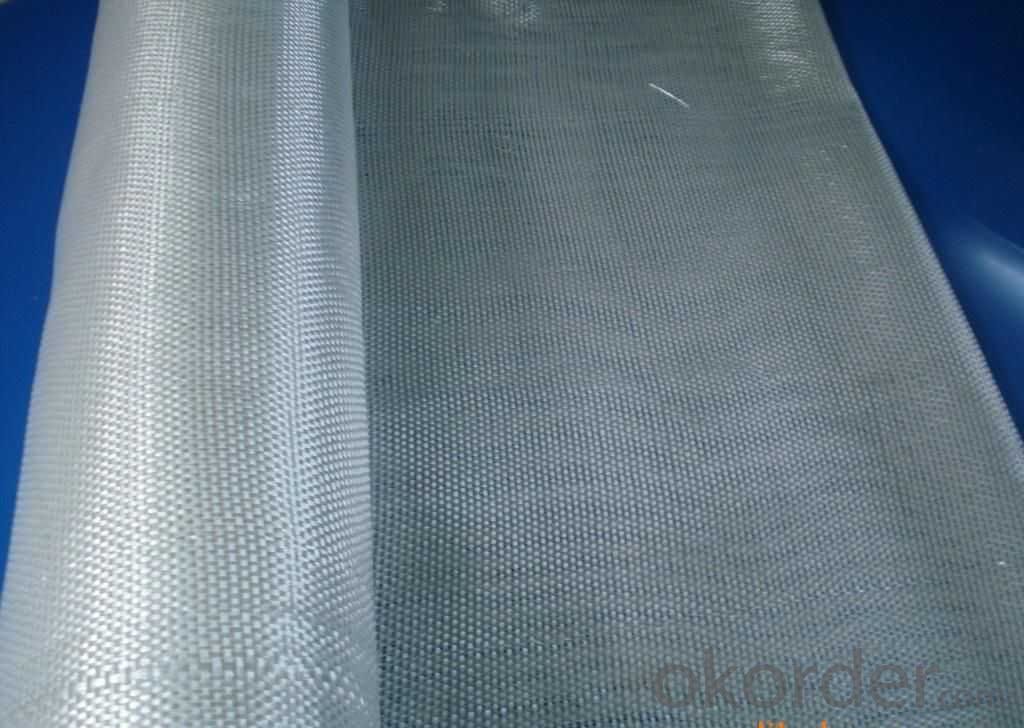
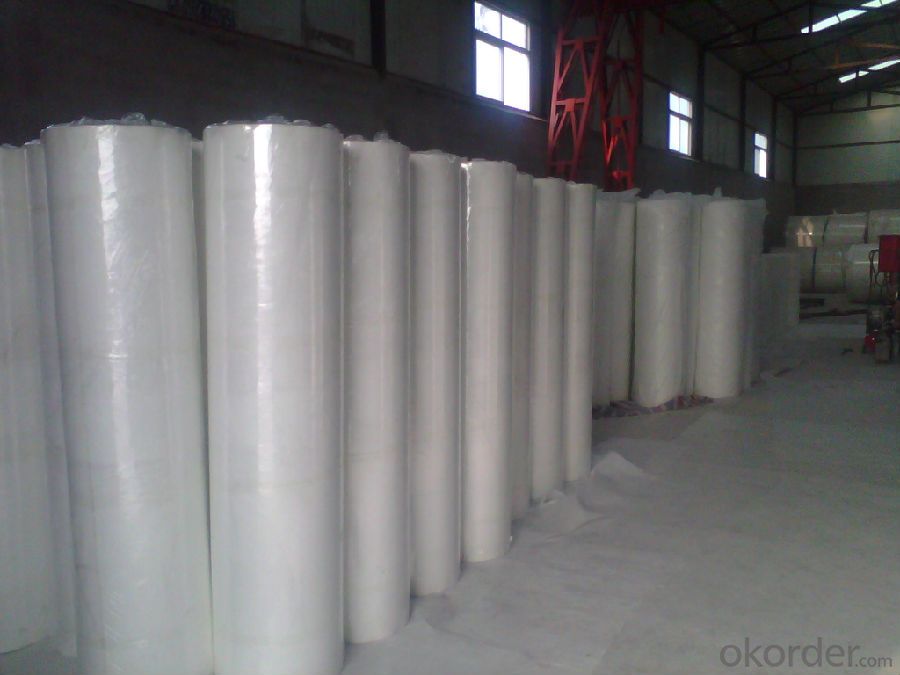
Fiberglass Fabric Usage:
E-glass woven roving is a schistose double faces reinforcement fabric that is weaved into from roving in directly.
E-glass fiber fabric (thin fabrics with thickness from 0.025 to 0.09mm) is suitable for electrical isolation mica product, wax cloth as the reinforcement materials.
E-glass woven roving applys to all kinds of polyester reinforcement system, (such as unsaturated polyester resin, vinylite,epoxy resin and phenolic resin.
E-glass woven roving is a high performance reinforcement material. It is widely used in hand lay-up and machinery processing products, (such as vessel, container, airplane and vehicle component, furniture, athletic facilities and other industry.
FAQ
1.Package of Fiberglass Fabric?
Fiberglass fabric is wound on a paper tube with inner diameters of 50. 8, 76 or 152mm. Each roll is wrapped in a plastic bag, then to be packed in a carton box. The rolls are to be horizontally placed.
Width (cm): 90, 100, 127
Length (m): 100, 200, 300, 400
2.Storage of Fiberglass Fabric?
Store rolls in a cool, dry location
Protect rolls from weather and other damage.
3.If sample available if needed?
We aim to offer our customer best Products&Service,samples are allowed if necessary.
- Q: Is fiberglass yarn resistant to acids or alkalis?
- Yes, fiberglass yarn is generally resistant to both acids and alkalis.
- Q: What are the common moisture management properties of fiberglass yarn?
- Fiberglass yarn is well-known for its ability to manage moisture in a variety of applications. Firstly, it naturally resists moisture due to its unique composition of glass fibers, preventing water absorption and protecting it from moisture damage. This quality ensures the yarn remains strong and intact even in humid or wet conditions. Moreover, fiberglass yarn dries quickly compared to natural fibers like cotton or wool, which can retain moisture for long periods. With its low moisture absorption rate, any moisture on the surface of the yarn evaporates rapidly, facilitating efficient and effective drying. Another significant moisture management property of fiberglass yarn is its resistance to mold and mildew. The non-porous nature of glass fibers inhibits the growth of fungi, even in high humidity environments. This resistance ensures the yarn remains clean and free from potential health hazards. Additionally, fiberglass yarn exhibits excellent moisture wicking capabilities, effectively pulling moisture away from the skin or surface it contacts. This feature makes it a popular choice for moisture-wicking clothing and technical fabrics utilized in sportswear or outdoor gear. To summarize, fiberglass yarn offers several common moisture management properties including resistance to moisture, quick drying ability, mold and mildew resistance, and efficient moisture wicking. These properties make it an optimal choice for applications requiring moisture control and management, such as insulation, textiles, and various industrial uses.
- Q: Can fiberglass yarn be used in electrical connectors?
- Yes, fiberglass yarn can be used in electrical connectors. It is commonly used as an insulating material in electrical applications due to its high electrical resistance and thermal stability.
- Q: Is fiberglass yarn suitable for use in medical applications?
- Fiberglass yarn is generally not suitable for use in medical applications. While fiberglass has many beneficial properties, such as being lightweight, strong, and resistant to chemicals, it also poses certain risks and limitations when it comes to medical use. One of the primary concerns with fiberglass yarn is its potential to cause irritation or allergic reactions when it comes into contact with the skin. This can be particularly problematic in medical applications where the yarn may be in direct contact with patients, especially those with sensitive or compromised skin. Moreover, fiberglass fibers can break off and become airborne, posing a risk of inhalation or ingestion, which can lead to respiratory or digestive issues. Additionally, fiberglass yarn is not inherently antimicrobial, meaning it does not possess inherent properties to resist the growth of bacteria or other microorganisms. In medical settings, where hygiene and infection control are of utmost importance, using materials that have antimicrobial properties is desirable. Therefore, medical applications typically require materials that are specifically designed and tested for their suitability in healthcare settings. These materials often focus on being hypoallergenic, non-toxic, and antimicrobial to minimize the risk of adverse reactions and infections. In summary, while fiberglass yarn has several positive attributes, it is generally not considered suitable for use in medical applications due to its potential to cause irritation, its lack of antimicrobial properties, and the risk of airborne fibers.
- Q: How does fiberglass yarn perform in terms of light transmission?
- Fiberglass yarn is not transparent and does not allow for light transmission. It is an opaque material that does not allow light to pass through it. Therefore, in terms of light transmission, fiberglass yarn performs poorly as it blocks and obstructs the passage of light.
- Q: Can fiberglass yarn be used in geotextiles?
- Yes, fiberglass yarn can be used in geotextiles. It is often used as a reinforcement material in geotextiles due to its high tensile strength and resistance to environmental factors such as moisture, chemicals, and UV radiation.
- Q: How does fiberglass yarn perform in alkaline environments?
- Fiberglass yarn typically performs well in alkaline environments. Its inherent resistance to chemicals, including alkaline substances, makes it a suitable choice for various applications where exposure to alkaline conditions is expected.
- Q: Can fiberglass yarn be used in the production of gaskets and seals?
- Yes, fiberglass yarn can be used in the production of gaskets and seals. Fiberglass yarn is a versatile material that has excellent heat resistance, high tensile strength, and good chemical resistance. These properties make it suitable for use in various industrial applications, including gaskets and seals. Fiberglass yarn can be woven or braided to create strong and durable gaskets and seals that can withstand high temperatures and provide a reliable barrier against leaks or fluid transfer. Additionally, fiberglass yarn can be combined with other materials or coatings to enhance its performance and adapt it to specific requirements. Overall, the use of fiberglass yarn in the production of gaskets and seals offers a cost-effective and reliable solution for various sealing applications in industries such as automotive, aerospace, and manufacturing.
- Q: How does the diameter of fiberglass yarn affect its performance?
- The diameter of the fiberglass yarn directly affects its performance. Generally, a thinner diameter yarn offers better flexibility, improved tensile strength, and increased resistance to abrasion. On the other hand, a thicker diameter yarn provides enhanced stiffness and higher load-bearing capacity. Therefore, the choice of yarn diameter depends on the specific application and desired performance characteristics.
- Q: How does fiberglass yarn affect the weight of a product?
- There are various ways in which the weight of a product can be affected by fiberglass yarn. Firstly, fiberglass yarn itself is light, meaning that when it is used as the main material in a product, it can greatly decrease the overall weight compared to heavier materials like metal or wood. This is particularly advantageous in industries where reducing weight is crucial, such as aerospace, automotive, and sporting goods. Furthermore, fiberglass yarn can also serve as a reinforcing material in composite products. When combined with resins or other matrix materials, it forms a durable and strong composite that is lightweight yet possesses high tensile strength. This enables manufacturers to construct products that are both sturdy and lightweight, making them easier to handle, transport, and utilize. In addition, the incorporation of fiberglass yarn in products can offer benefits such as enhanced energy efficiency. For instance, in the construction sector, fiberglass yarn is commonly employed in insulation materials. It boasts exceptional thermal insulation properties, reducing heat transfer and consequently decreasing the energy required for heating or cooling a building. This not only saves energy but also lessens the weight of the insulation in comparison to traditional materials like mineral wool or foam. To summarize, fiberglass yarn can have a positive impact on the weight of a product by providing lightweight characteristics either as the primary material or as reinforcement in composites. Its utilization can result in lighter yet robust and durable products, enhancing efficiency, cost-effectiveness, and ease of handling.
Send your message to us
Fiberglass Yarn - Flame-Resistant Fiberglass Fabric ISO9001
- Loading Port:
- Shanghai
- Payment Terms:
- TT OR LC
- Min Order Qty:
- 500 m²
- Supply Capability:
- 50000 m²/month
OKorder Service Pledge
OKorder Financial Service
Similar products
Hot products
Hot Searches
Related keywords
